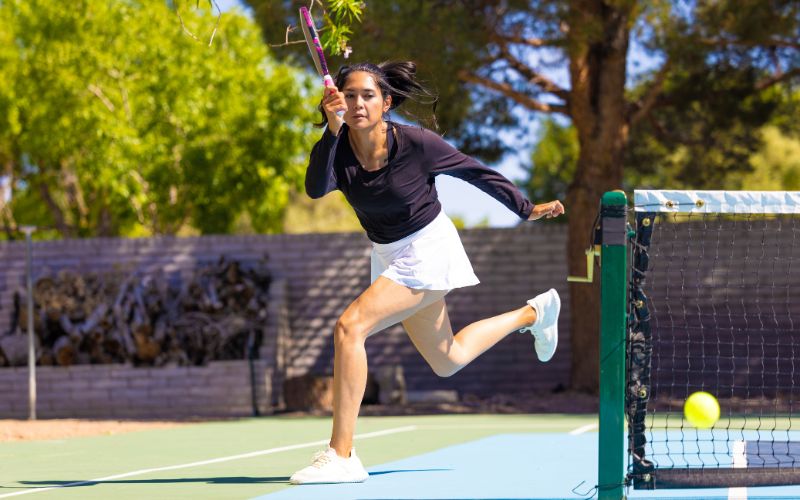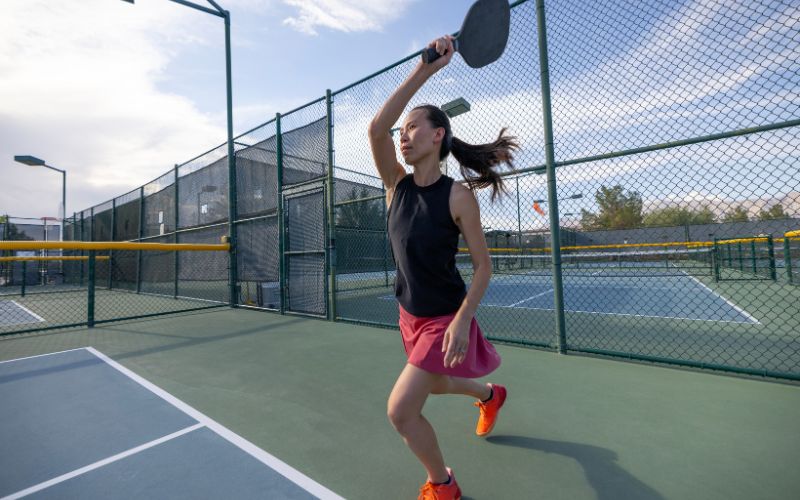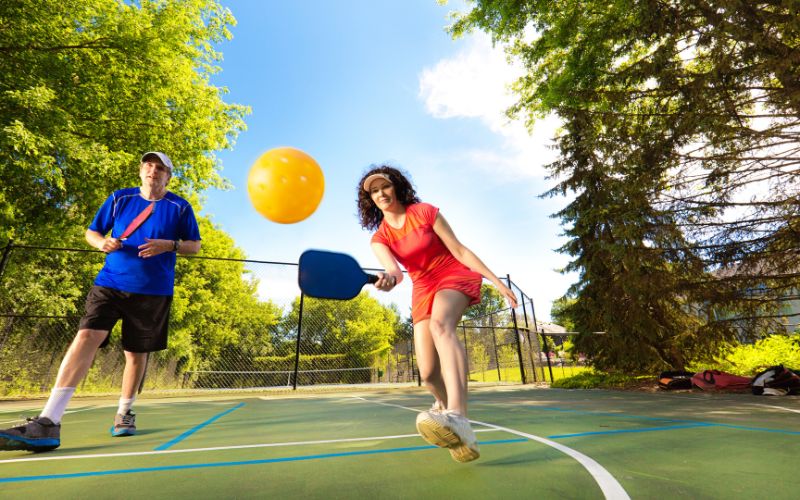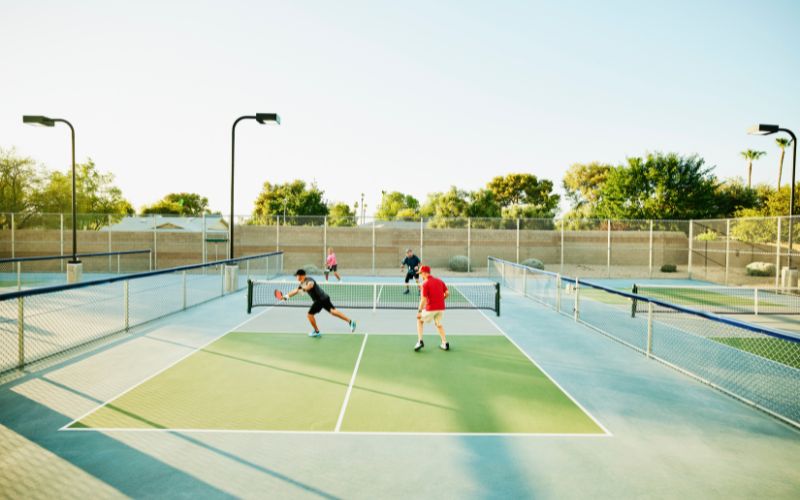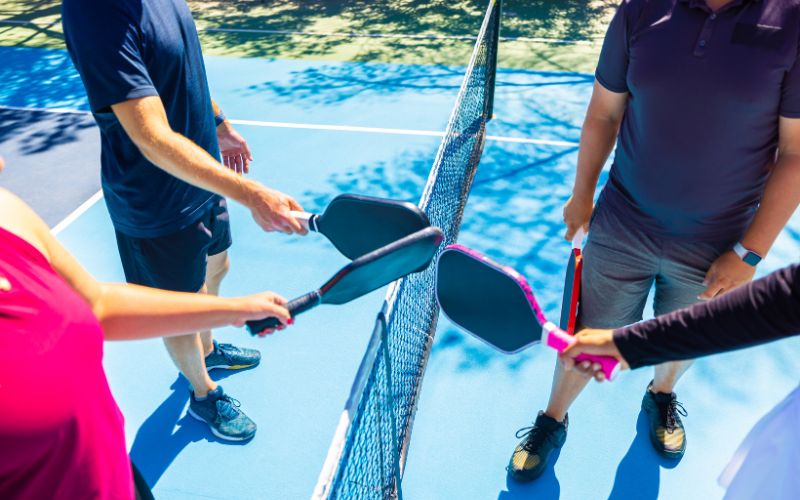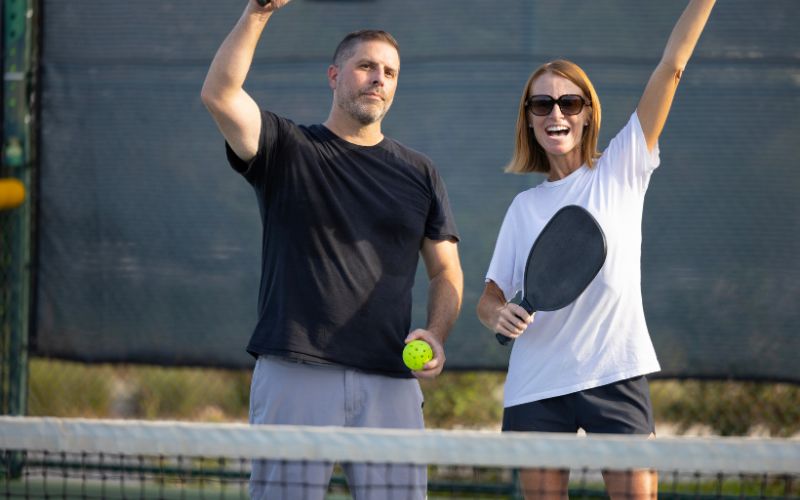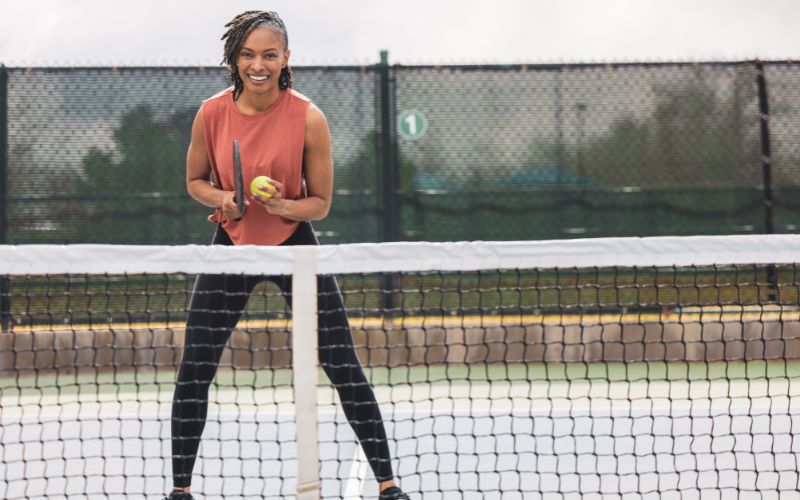Pickleball, an engaging and dynamic racquet sport, is characterized by its quick exchanges at the net. A volley in pickleball stands as one of the fundamental maneuvers in this game, showcasing finesse, strategy, and technique. Understanding the essence of volleys, their variations, and strategic applications is pivotal for any aspiring or seasoned pickleball player.
The Essence of a Volley
Defining a Volley in Pickleball
A volley in pickleball refers to a shot executed before the ball bounces on the court surface. This technique is primarily employed close to the net, within the non-volley zone, often requiring players to maintain a poised stance and react swiftly to incoming shots.
Key Characteristics
- Net Proximity: Volleys are predominantly executed within the non-volley zone, a seven-foot space on either side of the net.
- Quick Response: Players must anticipate and react promptly to strike the ball before it bounces.
- Controlled Shots: Volleys demand precision and finesse to maneuver the ball with accuracy and placement.
Types of Pickleball Volleys
1. Drop Volley
The drop volley involves delicately guiding the ball just over the net, causing it to drop abruptly. This shot requires finesse and control to deceive opponents and disrupt their positioning.
2. Dink Volley
The dink volley emphasizes finesse, executed by gently tapping the ball over the net, typically from a close distance. This shot aims to place the ball precisely and create difficult angles for opponents.
3. Punch Volleys
A punch volley involves a more forceful and aggressive strike, sending the ball decisively across the net with controlled power. This type of volley is effective for generating pace and catching opponents off guard.
4. Roll Volley
The roll volley encompasses a shot where the player imparts spin on the ball, causing it to rotate low over the net and skid upon landing. This can be a strategic choice to surprise opponents with an unpredictable bounce.
5. Backhand Volley
A backhand volley is executed using the backhand side of the paddle, requiring dexterity and skill to control shots effectively.
When Should I Volley in Pickleball?
Mastering the art of volleying in pickleball is not only about understanding how to execute different types of volleys but also knowing when to employ them strategically. Timing and decision-making play pivotal roles in determining when to execute a volley effectively during a pickleball match.
Understanding the Optimal Moments for Pickleball Volley
1. Proximity to the Net
Volleys are ideally executed when the ball is within proximity to the net. Being close to the net allows players to intercept the ball before it bounces, enabling them to dictate the pace and direction of the rally.
2. Anticipating Opponent’s Shots
Anticipation is key in pickleball. Reading your opponent’s movements and shot selection can give you cues about when a volley opportunity might arise. If your opponent’s shot appears to be high and near the net, it might be an optimal moment to execute a volley.
3. Ball Trajectory and Height
A high, floating ball with an arc descending towards the net presents an excellent opportunity for a volley. However, be cautious with very low balls, as executing a volley for such shots might be challenging and might lead to errors.
4. Avoiding Retreat
When you’re already positioned near the non-volley zone and the ball is approaching, it’s often better to move forward for a volley rather than retreating. Retreating could give your opponent the advantage, allowing them to take control of the rally.
5. Creating Angles and Opportunities
Volleying can be particularly advantageous when aiming to create challenging angles for your opponent. By volleying decisively and skillfully, you can maneuver the ball to difficult spots on the court, making it challenging for your opponent to return effectively.
6. Utilizing Non-Volley Zone
While volleys are typically executed near the net, being mindful of the non-volley zone line is crucial. You should aim to position yourself strategically within this zone to intercept shots effectively without violating the rules.
The Role of Volley Strategies
Mixing Up Shots
Varying your shots between different types of volleys (e.g., drop, dink, punch, or roll volleys) can keep your opponent guessing. Employing a mix of shots adds unpredictability to your gameplay and makes it more challenging for your opponent to anticipate your next move.
Exploiting Weaknesses
Observing your opponent’s weaknesses, such as difficulty in returning certain types of shots or movement limitations, can help you decide when to employ a volley. Exploiting these weaknesses strategically with well-timed volleys can tip the game in your favor.
Capitalizing on Opportunities
Recognizing and capitalizing on opportunities presented by your opponent’s shots or positioning can be crucial. When you notice a slight opening or a chance to exploit an opponent’s positioning, seize the moment for a well-executed volley.
Perfecting Pickleball Volleys: Techniques and Strategies
Mastering the Technique
- Grip and Paddle Face: Maintain a soft grip and keep the paddle face slightly open to maneuver the ball precisely.
- Stance and Positioning: Stand with feet shoulder width apart, in a ready position, anticipating the incoming ball’s trajectory.
- Contact Point and Swing: Position the paddle side hip forward, ensuring the arm is forward for the right contact point. Execute a controlled swing to hit the ball effectively.
Strategic Approaches
- Non-Volley Zone Tactics: Understanding the dynamics of the non-volley zone is crucial. Utilize this area strategically, considering opponent positioning and shot placement.
- Opponent Analysis: Observe your opponent’s feet and movements to anticipate their shots and execute timely volleys.
- Volley Variety: Incorporate different types of volleys strategically to keep opponents guessing and maintain the upper hand in the game.
The Significance of Volleys in Pickleball
Volleys serve as one of the most exciting aspects of pickleball, allowing players to exhibit skill, finesse, and quick thinking during the game. Mastering volleys enhances a player’s ability to control the pace, direction, and outcome of rallies.
Adhering to Official Pickleball Rule
Understanding the regulations and guidelines regarding volleys, particularly the limitations within the non-volley zone, ensures fair play and prevents rule violations. Players must avoid entering the non-volley zone to hit volleys, adhering to the official pickleball rules.
Final Thoughts
In pickleball, the art of volleying holds immense significance, showcasing a player’s finesse, agility, and strategic prowess. A well-executed volley can turn the tide of a game, securing more points and demonstrating skillful gameplay. Embrace the challenge of perfecting volleys, as they remain a cornerstone of this exhilarating sport.
The diverse array of volleys available in pickleball allows players to exercise creativity, finesse, and strategic planning during gameplay. Perfecting these techniques not only enhances a player’s skill set but also contributes significantly to their overall performance on the court.
Remember, a proficient volleying game can elevate your pickleball play, making it a thrilling and rewarding experience on the court.
FAQs about Pickleball Volleys: Mastering the Art
What is a pickleball volley?
A volley is a shot struck before the ball bounces, executed close to the net within the non-volley zone, showcasing finesse and quick reactions.
What are the key characteristics of volleys?
Volleys occur near the net, demand quick responses, and require controlled shots for accuracy and placement.
What are the types of pickleball volleys?
Types include Drop Volley, Dink Volley, Punch Volleys, Roll Volley, and Backhand Volley, each executed with specific techniques.
When should I execute a pickleball volley?
Ideal moments include proximity to the net, anticipating opponent’s shots, assessing ball trajectory, and creating strategic angles.
How do I perfect my pickleball volley technique?
Focus on grip, paddle face, stance, positioning, contact point, and strategic approaches like non-volley zone tactics and varying shot types.

